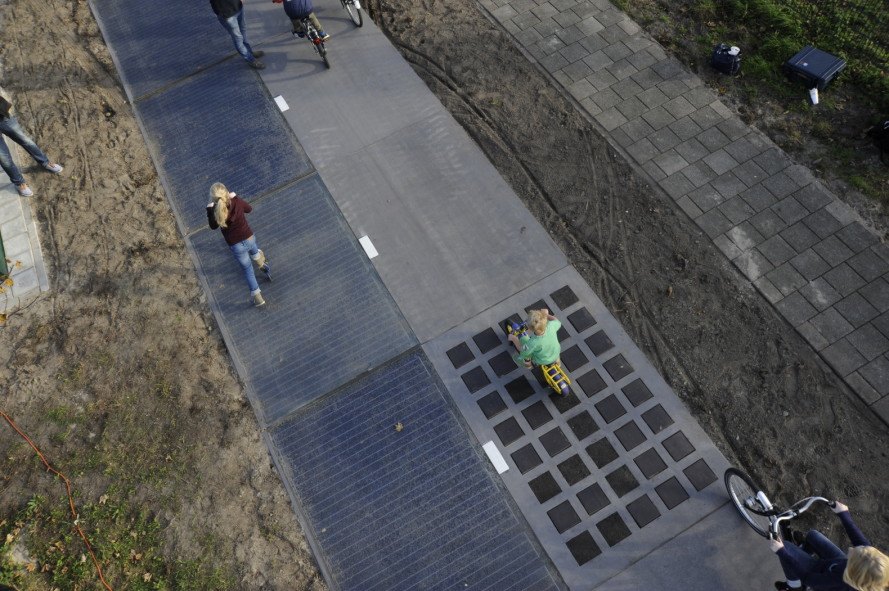Source: inhabitat.com
Published: November 17, 2015

SolaRoad Netherlands Solar Sidewalk Construction
It’s been one year since an innovative solar-paneled bike path was laid in Krommenie, Netherlands, and the results have even surprised the designers. Over the past year the path has generated 70 kilowatt-hours per square meter – enough to power about three houses. The people behind SolaRoad are hopeful the path’s success will spur more cities to adopt the idea and use existing roadways to gather cheap and sustainable energy.
Over 9800 kWh of energy was generated from trails of space that, until now, had been collecting no energy at all. The implications for sidewalks, paths, and road systems everywhere is mind-boggling. While rooftop solar panels are, at this time, cheaper to construct and can generate more power than their grounded cousins, SolaRoad designers are convinced that embedding these systems into our existing infrastructure is the way to go. They estimate that the pioneer solar bike path will pay for itself within 15 years – and in those years, the technology will have advanced immensely.

At the very least, cities who invest in solar-paneled roadways can expect to power streetlights on the sun’s dime. Beyond that, the possibilities for electric car charging and storing solar energy in local grids are just the beginning. The SolaRoad team has already started the fine-tuning process after the pilot experiment, developing new and improved coatings for the panels.

And, how does the public react? Sten de Wit of SolaRoad’s consortium says, according to Fast Company. “Most people do not even notice the difference with a regular bike road. That is exactly what we aim to achieve: roads doing whatever they have to do to be a proper road, while harvesting solar energy on the fly.”
